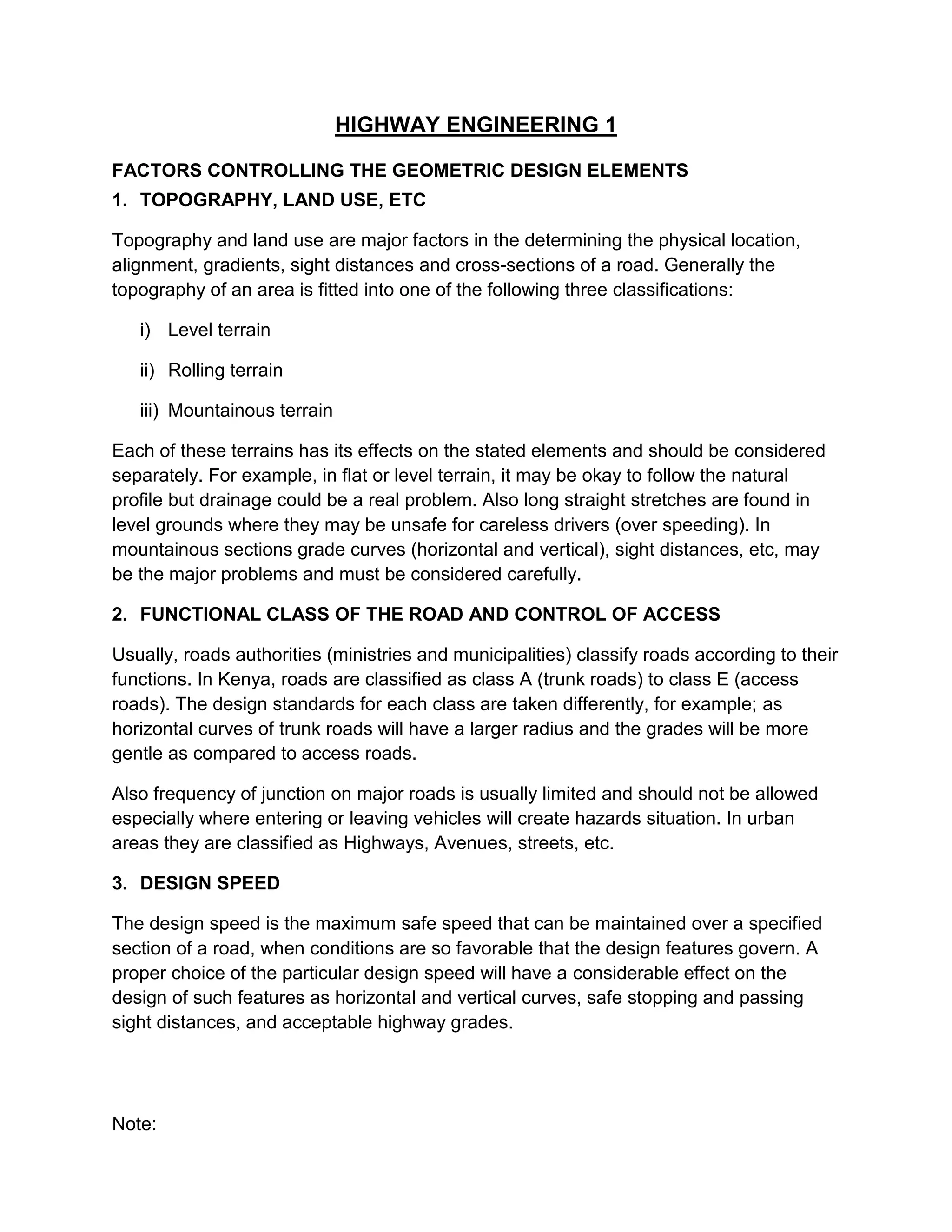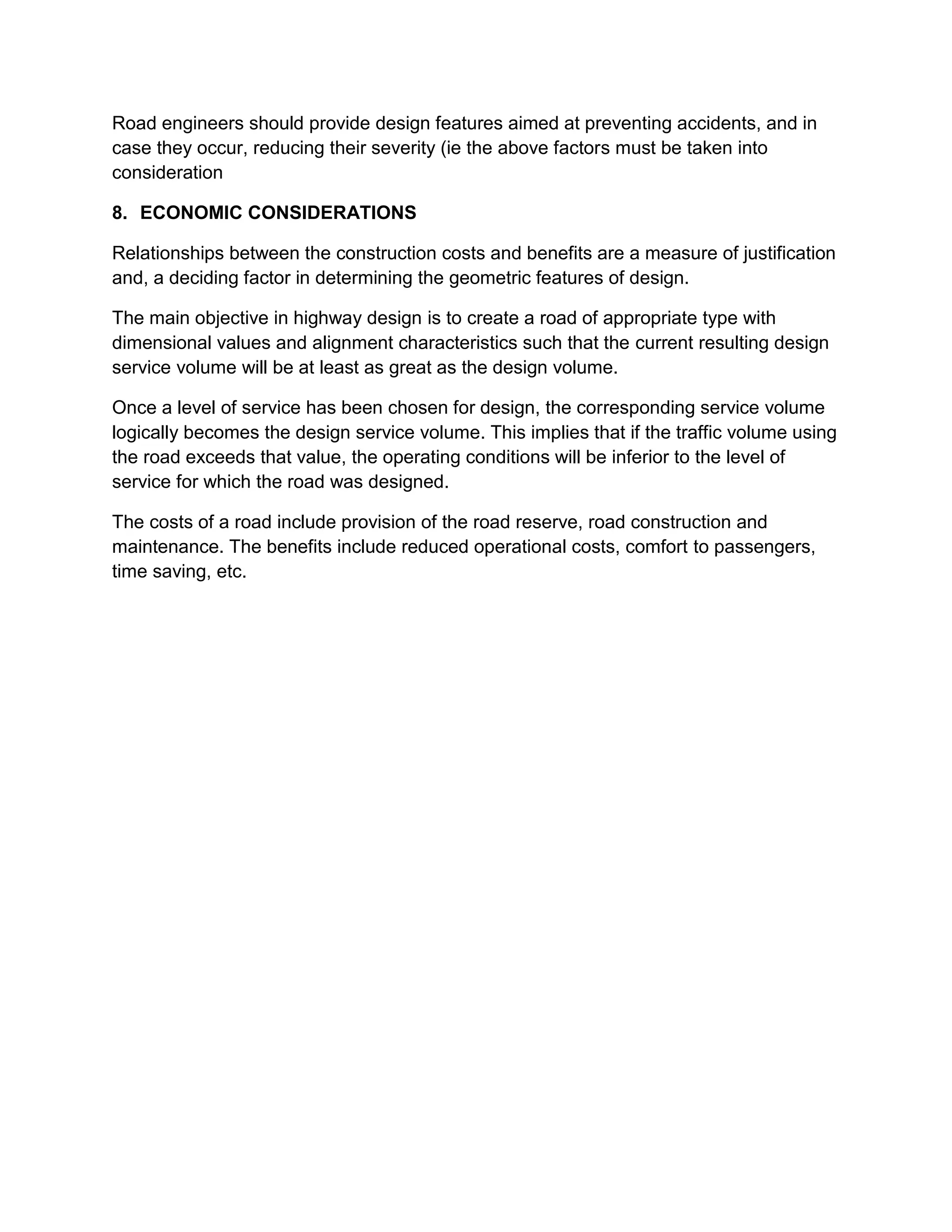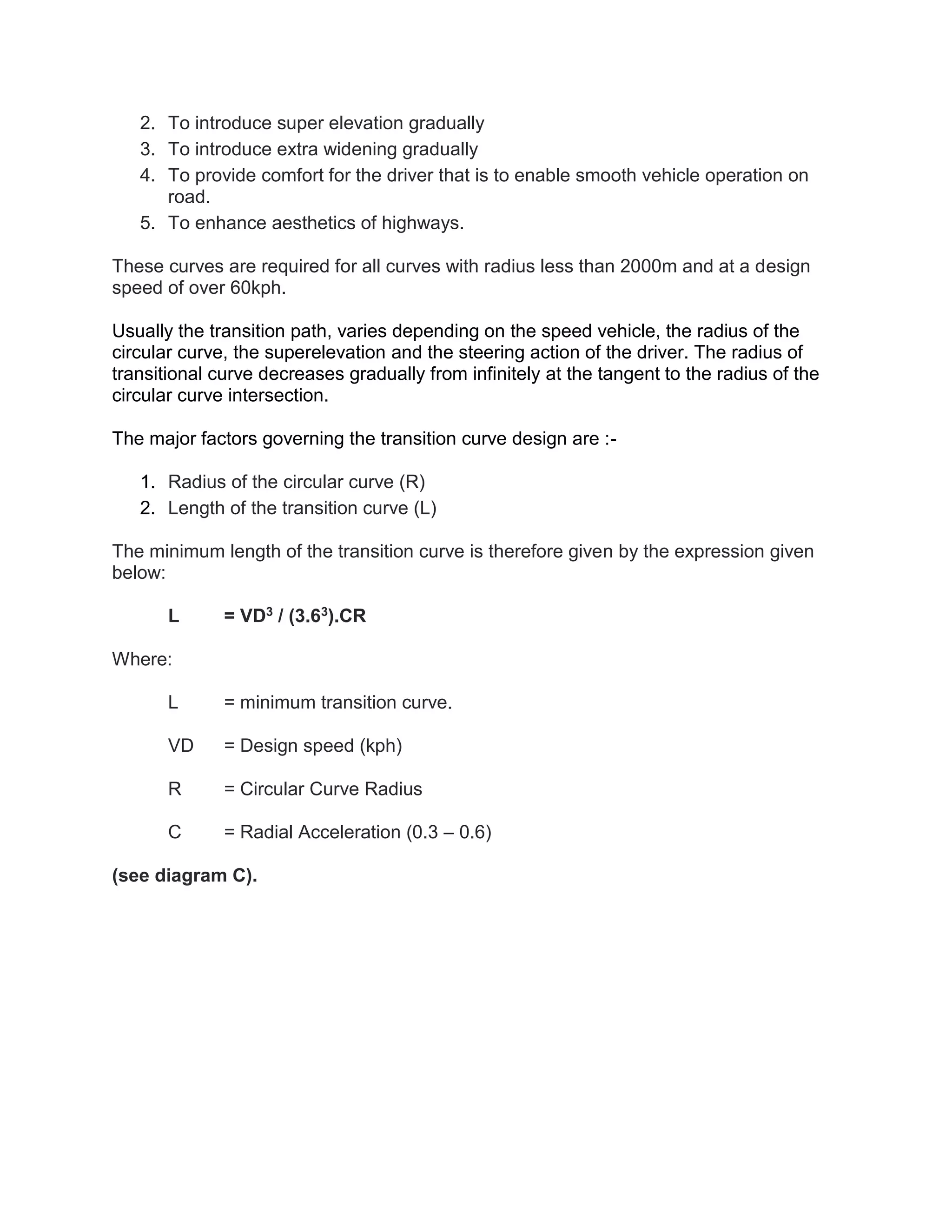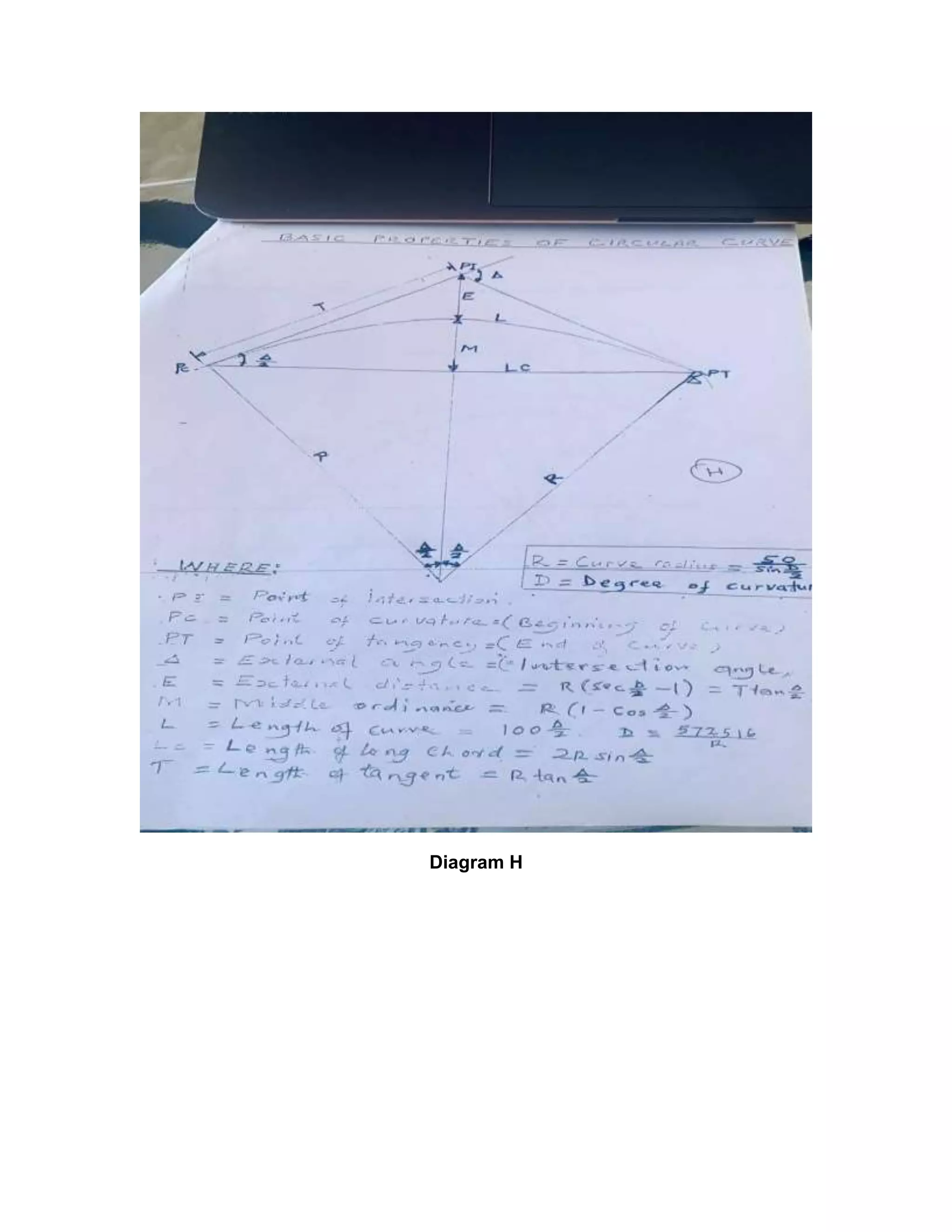This document discusses various factors that influence the geometric design of highways, including topography, land use, functional road classification, design speed, design vehicle, traffic volume, environmental and safety considerations, and economics. It describes key elements of horizontal alignment like straights, circular curves, transition curves, superelevation, and curve widening. Minimum radii for circular curves are provided for different design speeds. The objectives and methods for implementing transition curves and superelevation are also summarized.














